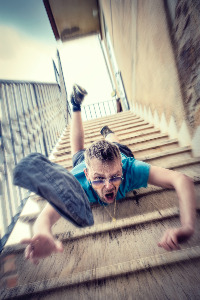
Falls pose a significant threat to public health, particularly among older adults. According to the World Health Organization (WHO), falls are the second leading cause of accidental or unintentional injury deaths worldwide. In this article, we will explore the dangers associated with falling and delve into strategies to prevent falls, drawing on reputable sources to provide a comprehensive understanding of this critical issue.
The Dangers of Falling Down
Falls can lead to various physical and psychological consequences, ranging from minor injuries to severe disabilities or even death. Fractures, particularly hip fractures, are common outcomes of falls among older adults. These fractures often require hospitalization and extensive rehabilitation, leading to a decline in overall quality of life. Moreover, the fear of falling can significantly impact an individual’s mobility and independence, resulting in social isolation and reduced physical activity. This, in turn, can lead to further health complications such as muscle atrophy and cardiovascular issues.
Common Causes of Falls
Numerous factors contribute to the risk of falling. These include:
- Age: As individuals age, their balance, coordination, and muscle strength may deteriorate, increasing the likelihood of falls.
- Health Conditions: Chronic diseases like Parkinsons, dementia, osteoporosis, arthritis, and cardiovascular disorders can affect an individual’s ability to maintain balance and stability. The many hormonal and physical changes that occur during pregnancy also increase risk of falling. And the elderly are especially susceptible to falls due to loss of muscle mass, decreased sense of balance and possible cognitive impairment.
- Medications: Certain medications, especially tranquilizers, sedatives, antihypertensives, and antidepressants, can cause dizziness or drowsiness, increasing the risk of falling.
- Environmental Hazards: Cluttered living spaces, poor lighting, uneven surfaces, throw rugs and lack of handrails on stairs are environmental factors that contribute to tripping and falls. Working from heights also poses risks.
- Impaired Vision: Poor eyesight can hinder depth perception and the ability to navigate obstacles.
- Poor Footware
Falls are often caused by a combination of factors. The more of these factors you can eliminate, the less the risk of falling.
How to Prevent Falls
Preventing falls requires a multifaceted approach that addresses both personal and environmental factors. Several strategies have proven effective:
- Physical Activity: Engaging in regular exercises that focuses on balance, strength, and flexibility can enhance muscle tone and coordination, reducing the risk of falls. Tai Chi, for instance, has been recognized for its positive effects on fall prevention.
- Medication Review: Regularly reviewing medications with healthcare providers can help identify drugs that increase fall risk. Adjustments or alternatives can be explored in collaboration with a medical professional.
- Regular Eye Check-ups: Routinely checking and correcting vision problems can improve an individual’s spatial awareness and ability to detect hazards.
- Home Modifications: Eliminating clutter, installing handrails along staircases, improving lighting, using non-slip mats in bathrooms and using gates at the top and bottom of stairs to prevent serious falls in infants and toddlers. Each of these can create a safer living environment.
- Footwear: Wearing appropriate footwear with non-slip soles and proper support can improve stability.
- Fall Detection Devices: For older adults living alone, fall detection devices can provide an added layer of safety by automatically alerting caregivers or emergency services in the event of a fall.
- Assistive Devices: Canes, walkers, and other mobility aids can help individuals maintain balance and reduce the risk of falling.
Conclusion
Falls are a serious concern that can lead to devastating consequences for individuals and their families. Recognizing the dangers associated with falling and implementing preventive measures is crucial to maintaining overall well-being, particularly for older adults. By addressing personal risk factors, staying physically active, and creating a safe living environment, the occurrence of falls can be significantly reduced.


